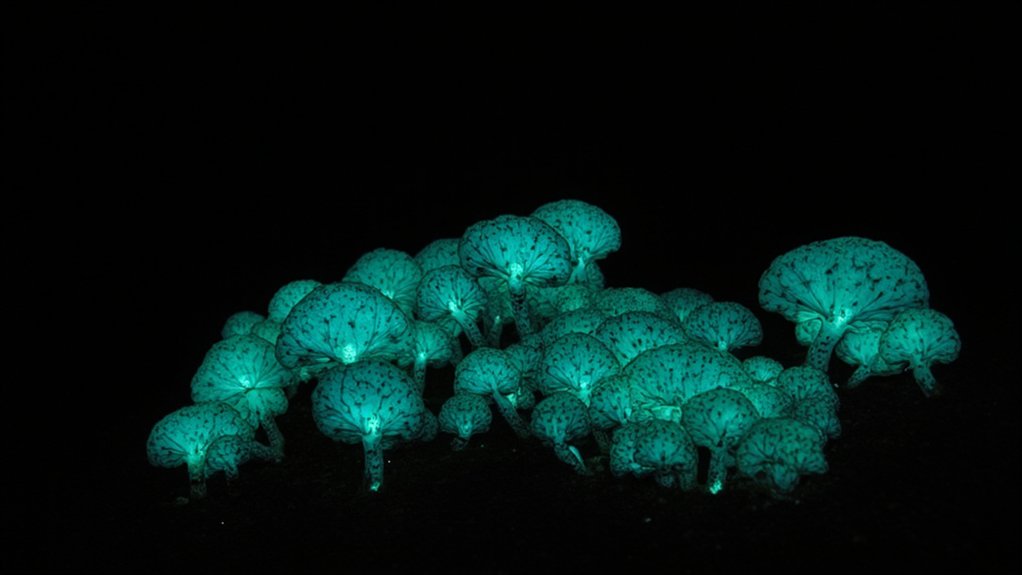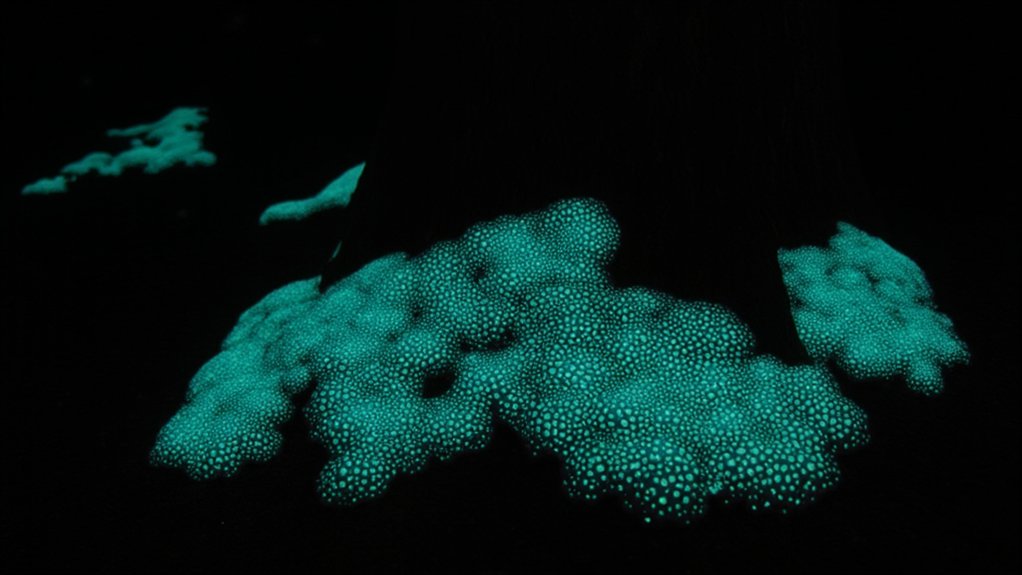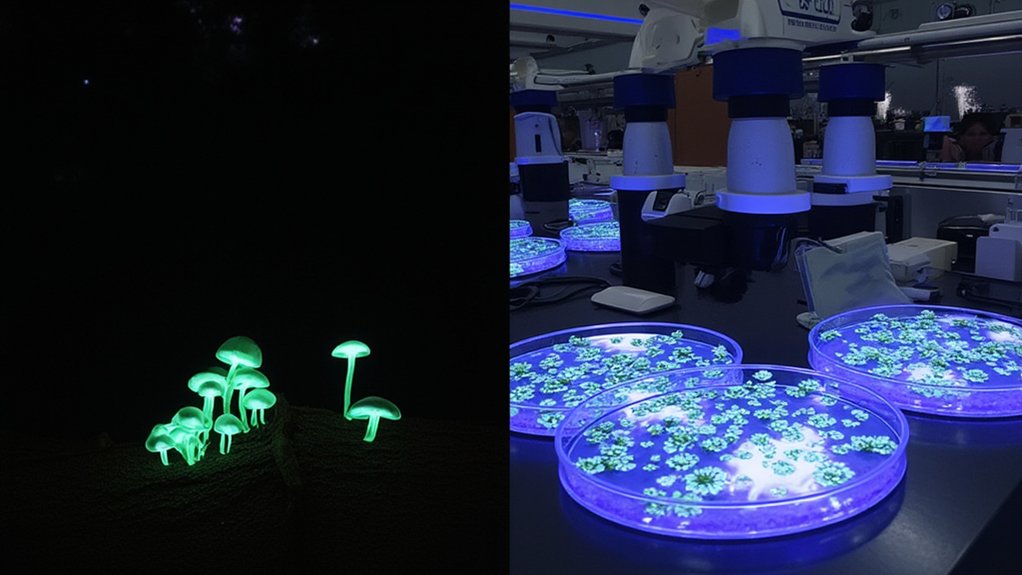Like Avatar’s bioluminescent wonderland, nature’s own glowing plants offer a fascinating glimpse into biological light production. You’ll find this remarkable process, called bioluminescence, in only a handful of plant species worldwide – from ethereal fungi to specialized algae. While natural light-emitting flora remains rare, recent breakthroughs in genetic engineering have opened new possibilities for creating plants that could literally light our paths forward.
Contents
The Chemistry of Natural Plant Bioluminescence

While scientists have discovered over 80 bioluminescent fungi species, naturally glowing plants are incredibly rare in nature. You’ll find that plant bioluminescence requires specific chemical compounds, primarily luciferin and luciferase, to create the signature blue-green glow.
When these chemicals interact with oxygen and ATP, they trigger a reaction that releases photons of light at wavelengths between 440-490 nanometers. The process is similar to what you’d see in fireflies, but plants utilize different molecular structures.
Unlike fungi that can glow continuously for days, natural plant bioluminescence typically occurs in brief bursts lasting only 45-60 seconds when triggered by environmental stimuli.
Known Species of Light-Emitting Plants

Natural plant bioluminescence appears in just a handful of documented species worldwide, making them some of nature’s rarest light-producing organisms. You’ll find the most well-known example in several species of fungi-infected honey mushrooms, where the mycelia create a ghostly blue-green glow in decaying wood.
The Australian cave-dwelling moss, Schistostega pennata, doesn’t actually emit light but creates a similar effect through specialized lens-shaped cells that intensify and reflect ambient light. Similarly, you’ll notice the desert-dwelling Dictyota, a brown algae species, producing a faint blue luminescence when disturbed at night.
From Forest to Lab: Research Breakthroughs

Since the early 2000s, scientists have made remarkable strides in understanding and replicating plant bioluminescence in laboratory settings. You’ll find that researchers have successfully transferred genes from luminescent mushrooms into tobacco plants, creating the first artificially glowing plant in 2020.
The breakthrough you’re learning about came from scientists at MIT, who discovered how to embed specific enzymes into plant tissues. They’ve managed to create plants that emit light about one-thousandth as bright as a desk lamp, and the glow lasts for several hours. This technology doesn’t harm the plant’s normal growth, making it a promising development for future applications.
Applications in Sustainable Lighting Technology
These groundbreaking lab developments have opened up exciting possibilities for sustainable lighting solutions. You’ll find that bioluminescent plants can reduce electricity consumption by up to 30% in indoor spaces when strategically placed as supplementary lighting.
The technology’s now being tested in urban planning, where modified trees could illuminate pathways and parks without external power sources. You can expect to see the first commercial applications within 5-7 years, starting with small decorative plants that provide 8-10 lumens of continuous light.
For home use, these plants require minimal maintenance – just standard watering and fertilizing schedules, plus annual genetic refreshment treatments to maintain luminescence.
Environmental Factors Affecting Plant Luminescence
Multiple environmental conditions work together to influence how brightly bioluminescent plants glow. Temperature plays an essential role, with most species showing peak luminescence between 68-72°F (20-22°C). You’ll notice the brightest displays during periods of ideal humidity, typically 60-75%.
Light exposure considerably affects the intensity of the glow, as you’ll need to provide 12-14 hours of indirect sunlight for maximum luminescence. The plant’s nutrient levels, particularly magnesium and calcium concentrations, directly impact the chemical reactions that produce light. You’ll want to maintain soil pH between 6.0-6.5 to support the enzymes responsible for bioluminescence.
